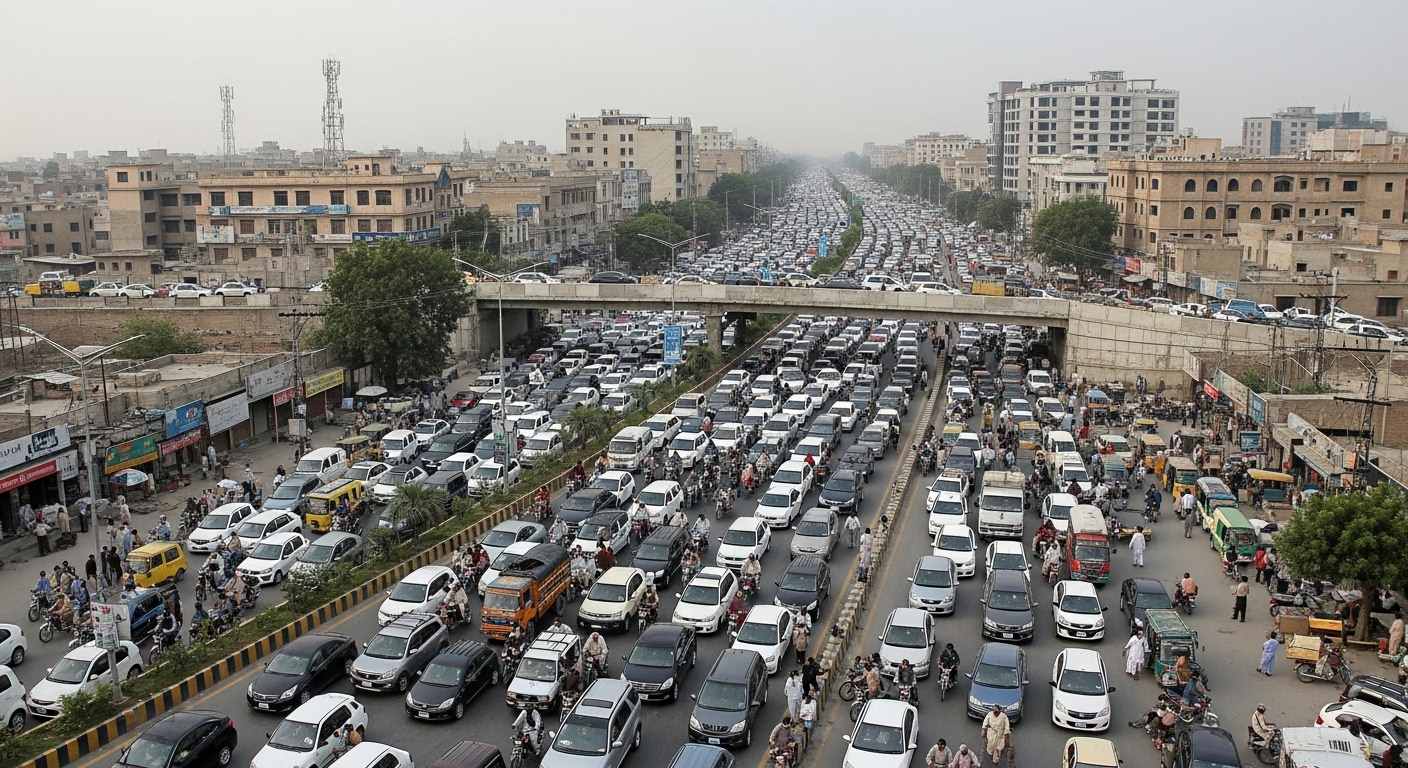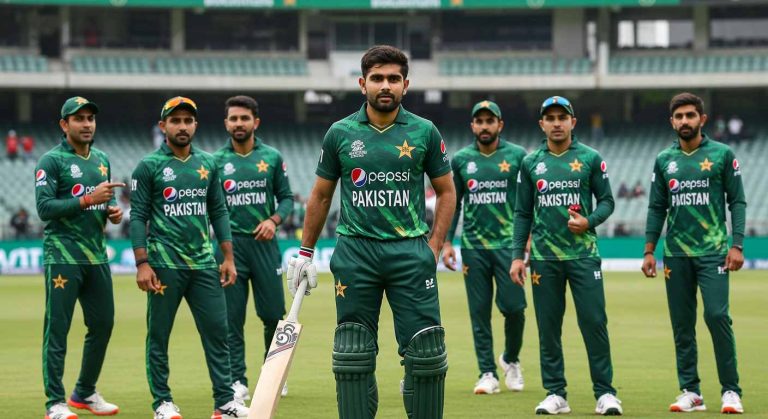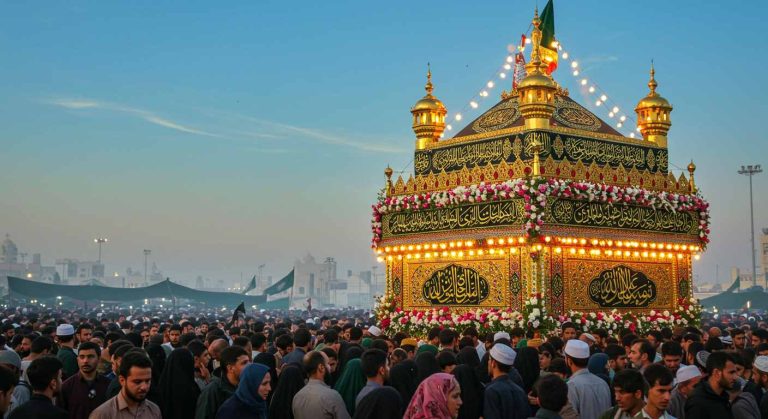Gridlock Nation: “How Traffic Chaos Chokes Pakistan’s Major Cities and What Lies Ahead”

Pakistan’s fast‑expanding metropolises—Karachi, Lahore, Islamabad, and Rawalpindi—are increasingly smothered by recurring traffic congestion, safety hazards, and inefficiencies that spotlight the urgent need for modern solutions.
Karachi: Gridlocked Arteries and Deadly Mixes
Karachi, a city of over 15 million, has been grappling with near-daily traffic paralysis on key roads such as Shahrah‑e‑Faisal, University Road, and MA Jinnah Road. On April 14, commuters endured hours-long jams across Saddar, Teen Hatti, Jail Chowrangi, and beyond.
But congestion is only the surface issue. The fatalities plaguing Karachi are alarming: approximately 600 serious accidents between January and September 2024 led to over 350 deaths and 650 injuries
Motorcyclists make up 64 % of vehicles on the road—and 64 % of fatalities making them the most vulnerable group. Add to this the mixing of trucks, buses, Qingqis, carts, and cars, and the traffic environment becomes especially perilous
The Sindh provincial government has implemented partial measures: restricting heavy vehicle movement to 11 pm–6 am, enforcing truck inspection QR codes, and increasing fines.
Yet despite these, gridlock persists—symptomatic of deeper planning and enforcement gaps.
Lahore: Parking Pandemonium and Pollution
In Lahore, as weekday traffic thickens, the city is taking tentative steps. The provincial authorities have given the green light for the construction of multi-level parking plazas at key locations such as Mall Road, Circular Road, and Gulberg, aiming to ease daytime traffic congestion.
But rampant illegal parking—about 1,000 unregulated stands—continues to choke roads, causing revenue losses and disorder
Traffic-induced air pollution further aggravates health woes. A spike in vehicular gridlocks has led to record-breaking smog and rising AQI levels, yet enforcement appears to prioritize ticketing over traffic flow and cleaner emissions .
Islamabad–Rawalpindi: A Capital in Congestion
Islamabad, once known for organized roads, is now plagued by traffic woes. Commuters report chaotic driving behaviours—undertaking, honking, and blocking lanes—turning previously serene drives into daily headaches . Construction of new flyovers and underpasses, such as in F‑8 and Margalla, appear to complicate rather than solve congestion, often at the cost of green spaces
Rawalpindi continues to wait for progress on the much-delayed Rawalpindi-Islamabad Ring Road, which is expected to provide significant traffic relief once completed.
Initially proposed decades ago, the 38 km loop—intended to divert through‑traffic away from urban centres—has begun construction and is projected to open around 2026 .
Infrastructure: Bus Rapid Transit, Ring Roads, and Urban Rail
Karachi Breeze, the city’s Bus Rapid Transit system powered by Green and Orange lines, carries about 58,000 passengers daily
Eight signal‑free corridors and two BRT routes were designed to ease congestion but have largely failed to do so.Lahore and Islamabad also offer metro‑bus services, yet coverage remains limited and unreliable for many commuters
Meanwhile, the Karachi Ring Road project—designed as a comprehensive urban belt—is being promoted as a long-term strategy to ease congestion on the city’s main thoroughfares.
Feasibility studies are underway, but the initiative remains stalled .
Cross-Cutting Problems
- Vehicle overload: Karachi alone sees some 300,000 new vehicle registrations annually . Lahore and Islamabad report steady auto growth, pushing roads past design capacity.
- Mixed traffic hazards: The intermingling of motorcyclists, carts, trucks and buses without separation leads to frequent collisions
- Encroachments & illegal practices: Unauthorized parking, eateries on sidewalks, and informal CNG rickshaws clog roadways.
- Weak enforcement: The shortage of traffic personnel—Karachi has 5,000 officers for 9,000 posts—and lax policing allow chaotic driving to persist .
Towards Sustainable Solutions
- Expand and enforce public transport: Lessons from Karachi Breeze suggest BRT and more buses dramatically reduce traffic and accidents . Islamabad and Lahore need to scale coverage and reliability.
Implement vehicle quotas and congestion pricing: Like Dhaka’s license cap or Manila’s tolls, Islamabad and Karachi could consider controlled vehicle registration and targeted tolls to reduce peak pressure - Functional ring roads and bypass corridors: Completion of Rawalpindi Ring Road and Karachi Ring Road would divert heavy traffic and ease city centre flow.
- Strict regulation of illegal parking and encroachments: Removing illegal parking and structures improves street capacity and safety.
- Safety-first planning: Dedicated motorcycle lanes and heavy vehicle curfews help reduce fatalities
- Smart enforcement & civic education: Traffic officers need reinforcement and technological enablement—cameras, digital fines, QR tags—to discourage rule-breaking.
Final Thoughts
If Pakistan’s major cities are to avoid permanent gridlock, immediate and holistic action is required: better public transport, regulated vehicle growth, digital traffic management, and roads engineered for diverse users. The cost of delay is high: lost productivity, environmental harm, escalating fatalities, and eroded quality of life. As the saying goes: the road to the future is paved not only with concrete, but also with intelligent planning.

